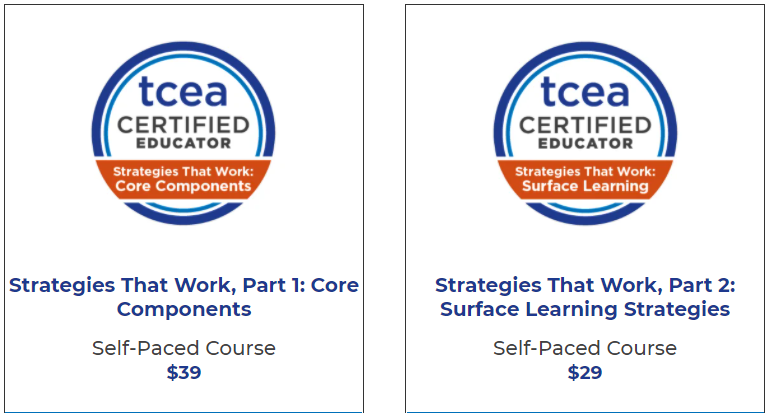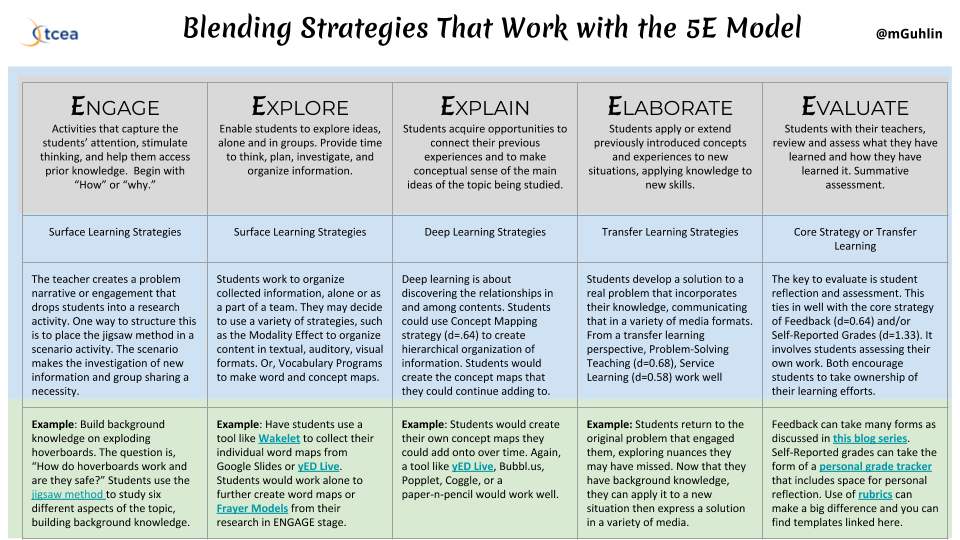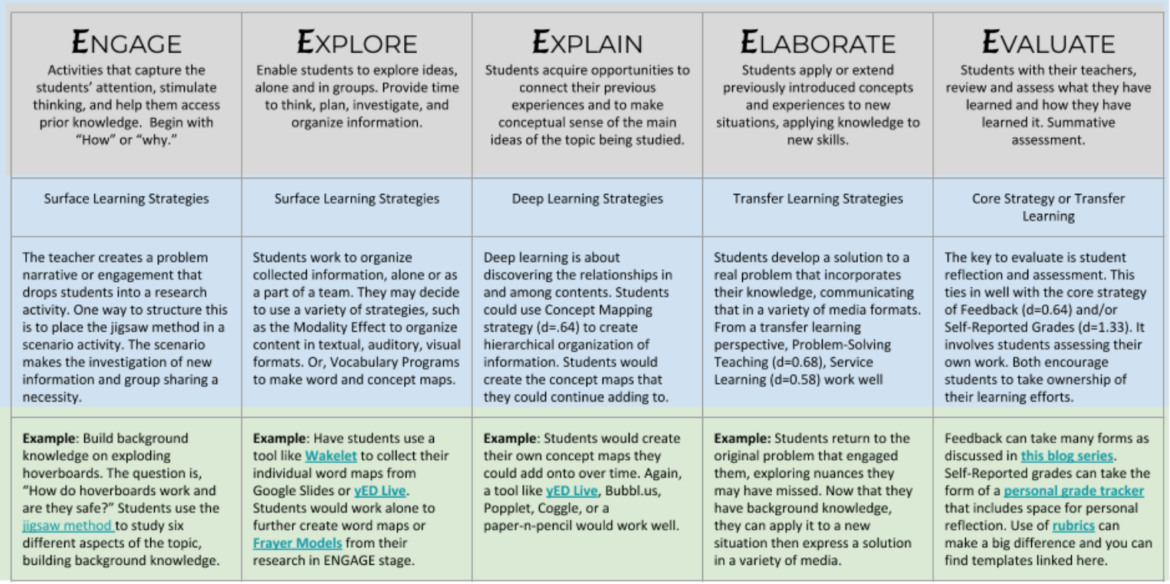Challenging circumstances aside, many educators continue to develop engaging lessons today. But how those lessons get delivered, facilitated, and assessed has changed for some. As I’ve shared before, the 5E Model remains a popular model to guide these instructional efforts. In this blog entry, let’s see how the model works with those teaching strategies that result in the highest achievement.
How does the 5E Model and high-effect size instructional strategies fit together?
Before answering that question, it is worth reflecting on the language of the 5E Model. It is also worth considering another question, “How do we use what we know of evidence-based strategies and when to use them to enhance the 5E Model?”
The Right Strategy and Learning Phase
Before looking at strategies, we first have to figure out when is it appropriate to use a particular strategy. Consider this point adapted for readability from Hattie, Fisher, and Frey:
What and when are important when it comes to instruction that has an impact on learning. Approaches that aid surface-level learning do not work as well for deep learning….
Match the right approach with the correct phase of learning.” Adapted from Source: Hattie, Fisher, and Frey (Visible Learning for Mathematics, 2017)
These phases of learning include surface, deep, and transfer learning. Here’s one way of understanding these strategies:
- Surface learning strategies: Content focused
- Deep learning strategies: Relationship in and among contents
- Transfer learning strategies: Transfer of newly acquired skills to new situations or tasks
If you’re not already familiar with learning strategies, you might want to take one of our online, self-paced courses on them. The Strategies That Work, Part 2: Surface Learning Strategies course is based on Hattie’s work and designed to help you select the best instructional strategies for each lesson. You can learn more about it (and Part 1) at TCEA.org’s Courses page.

Juxtaposing Strategies with 5E
The 5E Model often presents as an inquiry-based model. Inquiry-based teaching, according to the Visible Learning Meta X database, has an effect size of 0.46 and is described thusly:
Inquiry-based teaching is an educational practice where students assume a role. That role involves behaving as scientists or philosophers. They generate questions and seek to develop answers through the accumulation of evidence. This could include asking questions and solving problems. It often includes procedures such as small-scale investigations and practical projects (adapted from VisibleLearningMetaX).
I marvel that the 5E Model, as an inquiry-based teaching and learning strategy, has an effect size of 0.46. I have to ask myself, “How could we use the 5E Model to better effect?” One approach might involve relying on surface learning strategies (SLSs) that would introduce students to concepts. The use of Direct Instruction (d=0.59) and flipped learning could serve as two other strategies. Or we could rely on the jigsaw method (d=1.20). But what if I wanted the whole of student learning to fit inside of the 5E model?
Is it possible to align the right instructional strategy with the learning phase in the 5E model? That is, what strategy would work best with ENGAGE? Would it be a surface learning strategy or deep learning? To figure this out, let’s look at the 5E Model a bit more.
The 5E Model with the Right Strategy
One of the challenges is figuring out how to blend the right learning phase, strategy, and 5E stage. In this Google Slides document, I try to explain it better.

View in Google Slides | Get a copy | Learn How to Make a Copy
As you consider embracing the 5E Model, rely on strategies that match the phase of learning. A great follow-up blog entry you may want to review is The 5E Model vs Explicit Instruction. And you can also learn more about surface, deep, and transfer learning strategies in the Coaching for Results series.
Feature Image Source
Image by author.

